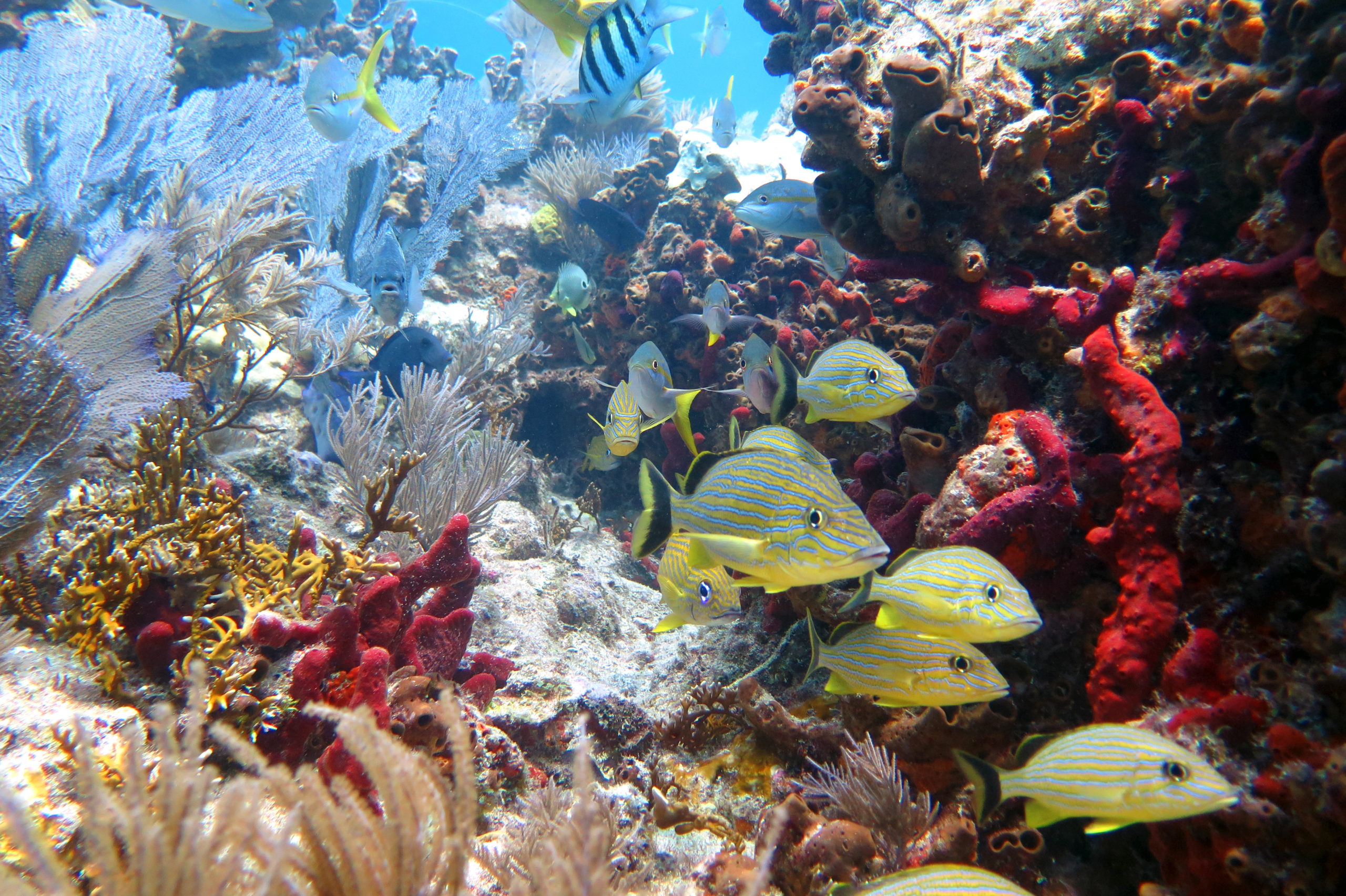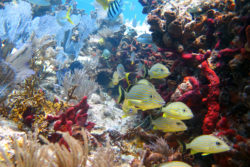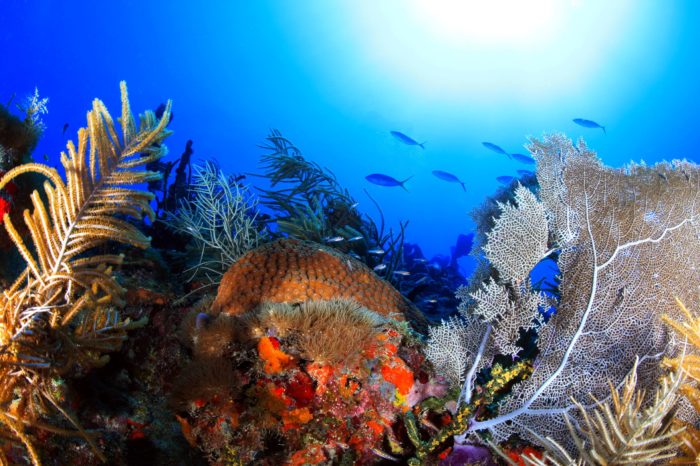
Coral Reefs 101

Photo Credit: Daryl Duda
Sometimes called the Rainforests of the Sea, coral reefs are the most diverse marine ecosystems on the planet. While they cover only two percent of the ocean floor, nearly 25 percent of all ocean species spend at least part of their lives on a reef, depending on it for food, shelter, and protection. Coral reefs also benefit human society by providing economic and environmental services worth billions of dollars each year. These include seafood (one of the world’s leading sources of protein), tourism and recreational opportunities, shoreline protections, and even medicine. But how do these magnificent ecosystems work?
Corals are marine animals related to invertebrates like sponges and jellyfish but are oftentimes mistaken for plants due to their appearance. Corals do not produce their own food, but instead capture food from the water with tiny tentacles. Scientists know of two types of coral: hard corals and soft corals. Coral reefs are primarily made of hard corals while soft corals settle within the ecosystem.
An individual coral animal is comprised of many individual and genetically identical polyps while coral communities are formed when many corals settle and grow in one area. Coral polyps are soft, and most are thinner than a coin. Each of polyp builds hard limestone skeletons that help them take “root” on a permanent structure; other polyps will settle on these limestone skeletons and eventually the coral structures we recognize begin to form. Individual corals can be male, female, or both sexes and can produce asexually through budding (a natural cloning process) or sexually through spawning (where gametes are released into the water column and result in fertilized embryos), which usually occurs in conjunction with a full moon or other specific environmental conditions. Asexual reproduction helps coral colonies grow at a faster pace while sexual reproduction creates genetic diversity and helps new reefs form in areas far away from their parents.

Photo Credit: Greg McFall
Corals rely on a symbiotic partnership with single-celled zooxanthellae algae that live within their polyps. The coral provide protection to the algae and the corals’ metabolic waste is used to help make food through photosynthesis; these algae return the favor by producing food on which the coral can feed, allowing the reef to grow and thrive. Zooxanthellae are also what help to give coral reefs the vibrant colors we love so much. Scientists believe this partnership between corals and algae began about 25 million years ago, which is why corals are some of the largest biological structures on earth.
The fully formed coral reefs we see in documentaries and on snorkeling excursions have taken hundreds or even thousands of years to grow, and while they are impressive, they are also quite fragile. Coral species have a specific range of environmental conditions in which they can thrive, whether that is a specific temperature range, ocean acidity, light intensity, or nutrient availability. When the environment changes, corals become stressed, which they can only tolerate for a short period of time before they begin bleaching. Bleaching is a process that involves corals expelling the zooxanthellae algae from their tissues, leaving behind a vulnerable, white skeleton. Corals can recover from bleaching but only if conditions return to normal before the corals starve.
Coral reefs are critically important ecosystems and face a number of environmental and human-induced threats, including warming ocean waters, ocean acidification, the spread of disease, introduction of harmful invasive species, physical damage from boat anchors and fishing gear, entanglement by marine debris, harvest of coral for sale in gift shops, too many nutrients due to runoff of fertilizers from land, and even harm done by well-meaning tourists. No matter where we live, we can make a difference for coral reefs by making changes in our daily lives to reduce our carbon footprint, minimize the waste we produce by choosing reusable or recyclable items, and choosing responsibly harvested seafood. When on vacation in areas that are home to coral reefs, we can protect them by wearing reef-safe sunscreens in the water, choosing responsible tour operators if we choose to snorkel or dive on a reef, practicing responsible diving and snorkeling practices like finning and taking only memories from the reef, and learning more about coral reef biology and the meaning they have to the local community.
